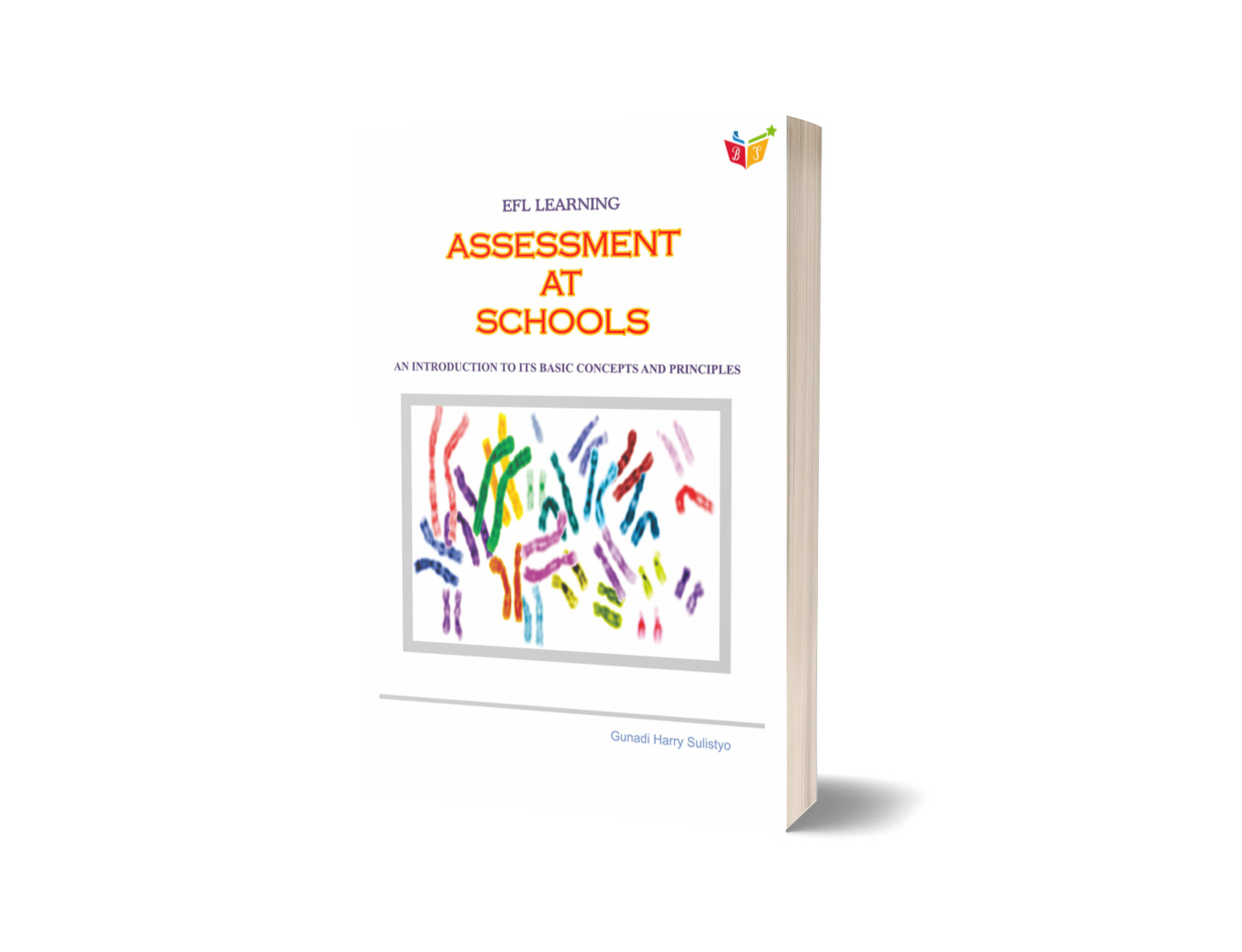
EFL LEARNING ASSESSMENT AT SCHOOLS AN INTRODUCTION TO ITS BASIC CONCEPTS AND PRINCIPLES
Buku Ajar
Rp70000.00Rp65750.00
Out of stock
Karya: Prof. Dr. Gunadi Harry Sulistyo, M.Pd.
Editor: Team CV. Bintang Sejahtera
ISBN : 978-602-1150-03-0
Ukuran: 17,5 x 24,5
Halaman:xiv+212
This textbook is essentially made available into its present shape based on several materials once utilized for several activities related with tests and assessment. Several papers provided for and delivered during workshops previously held with junior and senior high school English teachers have some contribution to the shaping of this book. Materials once utilized for teacher certification activities also have taken their part, which are then extended and sharpened in some way. In addition to these, new materials are also developed, all with the focus on making an obvious link between theories and practices in assessment of English language learning. The aim is mainly introducing hands-on and down-to-earth stuffs pertaining to English learning assessment.
This book is mainly organized into 11 chapters. The first chapter is devoted to discussing conceptual topics on the nature of content standards, teaching, and assessing as well their relationships. Three sub-topics: Competence as a Speculative Evolving Concept, Communicative Competence as a Normative Document, and Competence as Literary Levels are discussed. To conclude this chapter, a sub topic on Roles of Assessment is presented. It is expected that with these three sub topics, readers will be more aware of the underlying features of assessment as one important component in the context of teaching-learning activities.
Chapter II deals mainly with four important terms that are frequently used interchangeably while their underlying concept differs substantially. These are test, measurement, evaluation, and assessment. An appropriate understanding of their underlying concept is expected to provide practitioners and college students who will become teachers of English with a sound basis to carry out activities of testing, measuring, evaluating, and assessing proportionately.
Chapter III deals further with reasons for developing assessment tools. Assessment tools have their own specific target of measurement. Therefore, an idea of purpose of developing an assessment tool should be clear from the beginning. Tests as an assessment tools can be developed on different bases: aptitude, selection, placement, achievement, diagnosis, proficiency, and other reasons.
Chapter IV discusses conceptual criteria for a good assessment tool. Assessment tools are data collection instruments on which correct information will be gained. Therefore, certain criteria should be met before the instruments are administered to collect data of students’ learning. For the purpose, two main topics are discussed: reliability and validity. In addition, three other sub-topics are presented: practicality, usability, and economy.
Chapter V is essentially the continuation of Chapter IV in that the former provides conceptual bases; the later practical conducts on how to estimate and determine reliability and validity. In brief this chapter deals with procedures to find evidence of reliability and validity of scores based on the assessment tools that have been developed. Techniques of estimating test-related reliability and rater-related reliability as well as validity are presented and discussed.
Chapter VI deals with development and validation of assessment tools. Developing assessment tools is essentially a professional process. As such, there are standards of operating procedures that test and non-test developers are to follow when their aim is to develop quality assessment tools. For the purpose two sub-topics are discussed: conceptual and empirical steps.
Chapter VII provides a room to discuss approaches to assessing language. Concepts in assessment of language has witnessed a significant shift from the pre-scientific to the scientific eras. In the scientific era, a significant progress to approaches of assessing language has also materialized, resulting in dominant approaches: the Structural Approach, the Integrative-Pragmatic Approach, the Communication-Based Movement Approach, and the Performance-Based Movement Approach. Historical advances and conceptual ideas on how to assess language in each approach as well as empirical evidence on the use associated with each approach are presented. Classroom implications in the presence of these approaches are also discussed in this chapter.
Chapter VIII provides a discussion on the basis to develop a test content specification. Specifying test contents into a test blueprint is a critical stage in test development as it will assure the content of what to test as well as its scope and target length of utterance to be measured. This chapter also deals with the role of a test content specification in the test development and samples of test content specification.
Chapter IX deals with concepts and procedures of scoring, grading, interpreting scores, and describing student’s achievement performance on a test. Several scoring techniques are discussed. Grading strategies are presented. Finally, describing students’ performed are discussed under the sub topics of measures of central tendency and measures of variability. Some simple statistical procedures are introduced for the purpose.
Chapter X deals with Classical Item Analysis. It introduces the nature of classical item analysis. Several approaches to item analysis are introduced. Also, two modes of analyses are discussed: Qualitative and Quantitative. This chapter is concluded with a sub topic on making use of information as a result from analyzing data based on principles of classical item analysis.
Chapter XI is the last chapter in this book. It introduces a topic on Item Response Theory which is considered more powerful than Classical Item Analysis. This chapter discusses these sub-topics: parameters commonly used in the context of item response theory, fulfilments of assumption, parameter logistic models and their selection. This chapter is concluded with a sub-topic item information function and test information function
These topics in each chapter are organized intentionally in that order with the hope that such a presentation and organization of materials in this book will provide practitioners and college students with a practical and clear sense on development instruments to assess students’ learning from theory to practice.
